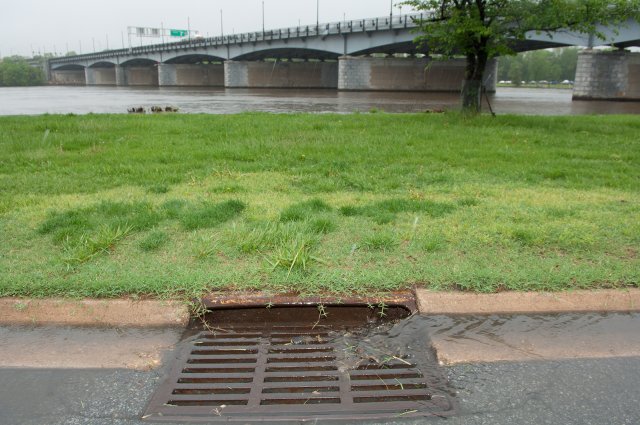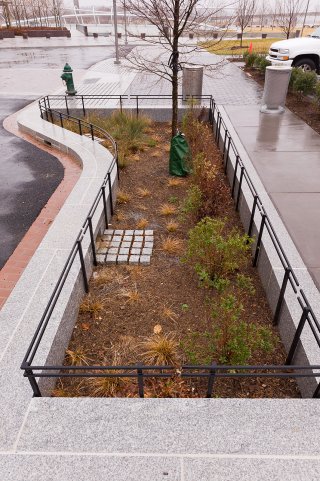Urbanization and Stormwater Runoff

Stormwater runoff is generated from rain and snowmelt that flows over land or impervious surfaces, such as paved streets, parking lots, and building rooftops, and does not soak into the ground. Runoff can pick up and deposit harmful pollutants like trash, chemicals, and dirt/sediment into streams, lakes, and groundwater. Construction sites, lawns, improperly stored hazardous wastes, and illegal dumping are all potential sources of stormwater pollutants.
To protect water resources, communities can employ management practices to control stormwater and prevent pollution at its source.
- Public education and outreach with homeowners and businesses on topics such as proper use and storage of household toxic materials, equipment maintenance practices, and responsible lawn care and landscaping helps prevent pollution.
- Erosion and sediment control measures help prevent sediment, chemicals, and nutrients from washing off construction sites.
- Land use controls and/or incentives restrain certain activities within a defined area, such as a source water protection area, or encourage certain land uses or best management practices. Local government officials can use subdivision growth controls, zoning ordinances, overlay districts and other land use controls to limit impervious surfaces, encourage open space, impose runoff-efficient site design standards, locate high risk activities away from drinking water sources, or facilitate cluster development to reduce runoff. Example source water protection ordinances.
-

Rain gardens collect rainwater from roofs, roads, and parking lots and allow it to soak into the ground. They can also provide important food and habitat for birds, butterflies, and other wildlife.
The most effective stormwater pollution prevention plans combine these measures and reflect local soil, precipitation, and land use conditions.
EPA’s National Pollutant Discharge Elimination System (NPDES) Permitting Program regulates stormwater runoff from municipal separate storm sewer systems (MS4s), industrial activities, and construction activities. Operators of these sources might be required to obtain an NPDES permit before they can discharge stormwater. This permitting mechanism is designed to prevent stormwater runoff from washing harmful pollutants into local surface waters.
